35 Medicinal Herbs to Grow in Your Garden This Summer
If you’re looking to invest in your health by growing your own natural remedies and supplements, then why not consider growing a medicine herb garden?
You can freeze, sun-dry, or dehydrate your herbs at years-end so that you have a constant (and free) supply of plants to help heal a variety of ailments or complaints.
Whether its lavender’s calming abilities, or echinacea’s protection against viruses and bacteria, many plants possess powerful properties to improve your health — and you can grow many of them in your own backyard, as long as they receive enough light and water.
35 Medicinal Herbs to Grow in Your Garden
When planning out your garden, don’t forget to include some of these medicinal herbs.
If you keep companion planting in mind, then you can protect other plants from certain pests that oppose the strong scents of aromatic herbs and flowers like basil and marigolds.
So with that being said, here are 35 medicinal plants to grow in your garden this summer:
1. Aloe Vera (Aloe barbadensis miller)

Aloe vera is great for a handful of conditions. To start, it can be used to maintain good oral health (1✓), and is excellent for healing sunburns (2✓).
Consuming edible forms of aloe vera like Aloe vera barbadensis has also been shown to reduce inflammation in the body (3✓) as well as boost the immune system (4✓).
This plant prefers sandy soil and does not like to get watered very often. It works well as a potted plant so you can bring indoors during the cooler months.
2. Asparagus (Asparagus officinalis)
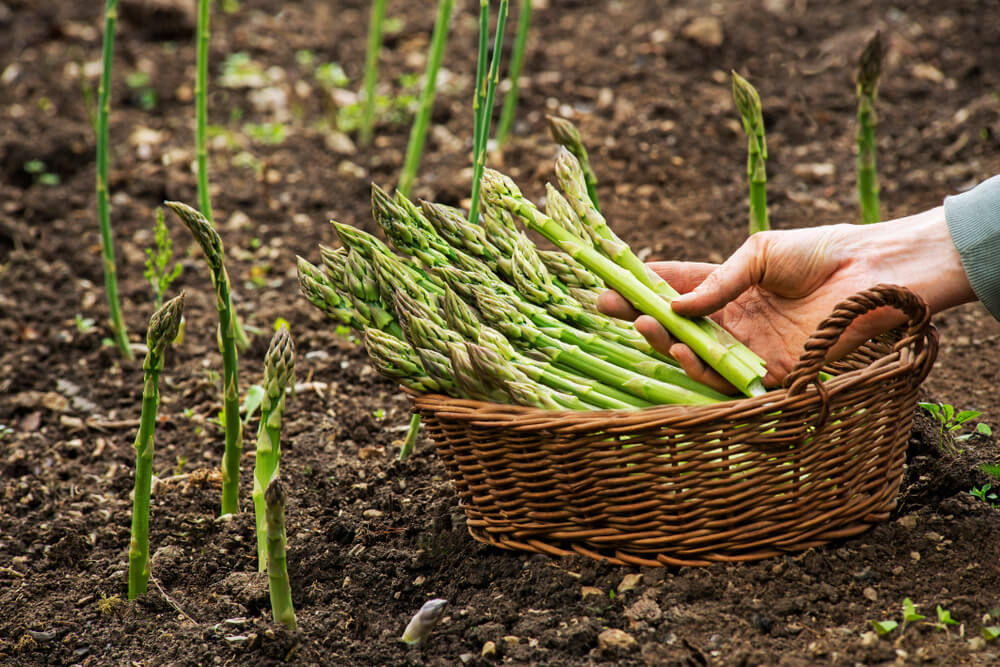
Asparagus is a perennial herb native to Europe and Asia. It is loaded with antioxidants to help offset the negative effects of oxygen free radicals like aging and chronic inflammation.
Asparagus nourishes the digestive tract by providing it with plenty of soluble and insoluble fiber. Insoluble fiber adds bulk to stool, while soluble fiber forms a gel-like substance in the digestive tract and feeds friendly gut bacteria like Bifidobacteria and Lactobacillus (5✓).
Asparagus is a perennial, so you only need to plant once for it to propagate for a lifetime. Make sure you give this plant space, and it will spread quite far and provide you with fresh asparagus year-round.
3. Basil (Ocimum basilicum)

Basil is one of the top medicinal herbs to grow in your garden. Not only does it taste amazing in recipes like soups, stews and salad, but it can be used topically for a variety of conditions.
Basil is an excellent anti-inflammatory, thanks to eugenol, an enzyme-inhibiting aromatic oil that can provide symptomatic relief for those with rheumatoid arthritis or inflammatory bowel conditions (6✓).
This herb also possesses strong antibacterial and antimicrobial properties because of its volatile oils like estragole, linalool, cineole, eugenol, sabinene, myrcene, and limonene. These oils have been found to inhibit several species of pathogenic bacteria that have become resistant to commonly used antibiotic drugs (7✓).
Its leaves and flowers may be used in medicinal teas to help with headaches, sinusitis, coughs, and even stress and anxiety.
Plant basil around your tomato plants to bring out the flavor of your tomatoes. A little tip with basil — after your seedlings have produce their first 4-6 leaves, prune to above the second set. This will encourage the plant to branch, resulting in more basil leaves.
4. Chamomile (Matricaria chamomilla)

If you deal with a lot of stress and anxiety, chamomile is one herb that you should always keep on hand. And what better way to have year-round access to it than by planting it in your medicine garden!
Drinking chamomile tea can help increase levels of serotonin and melatonin, two hormones that are known to ease a stressful mind and calm those who worry (8✓).
The anti-inflammatory and antioxidant properties of chamomile can help relieve skin irritations like eczema and rosacea (9✓). You can make a topical application of chamomile by steeping the flowers in hot water for an hour or so and then straining. Use the water to apply to the skin 2-3 times per day.
Chamomile grows best in cool conditions, so try to plant it in part shade. It works as a great companion with cabbage, onions, beans, cucumbers, broccoli, kale, brussels sprouts, and cauliflower.
5. Cilantro (Coriandrum sativum)

Cilantro is an excellent herb to grow in your medicine herb garden. I particularly love it because of its heavy metal-detoxing properties.
The chemical compounds in cilantro bind to toxic metals and loosen them from the tissues, while also acting as a powerful digestive aid (10✓).
Cilantro is particularly great for our cardiovascular system and can help lower blood sugar levels (11✓) and prevent the oxidative damage that leads to heart damage (12✓).
Cilantro can also be used to alleviate the irritation that comes from hives, sunburns and poison ivy. The plant contains natural antihistamines that reduce the allergic response in the body. It can be applied topically as a paste, or consumed in a juice or smoothie.
Hot weather and direct sunlight will make cilantro quickly bolt and go to flower. It is best to grow cilantro in cooler, shadier areas of the garden for these reasons.
6. Cloves (Syzygium aromaticum)
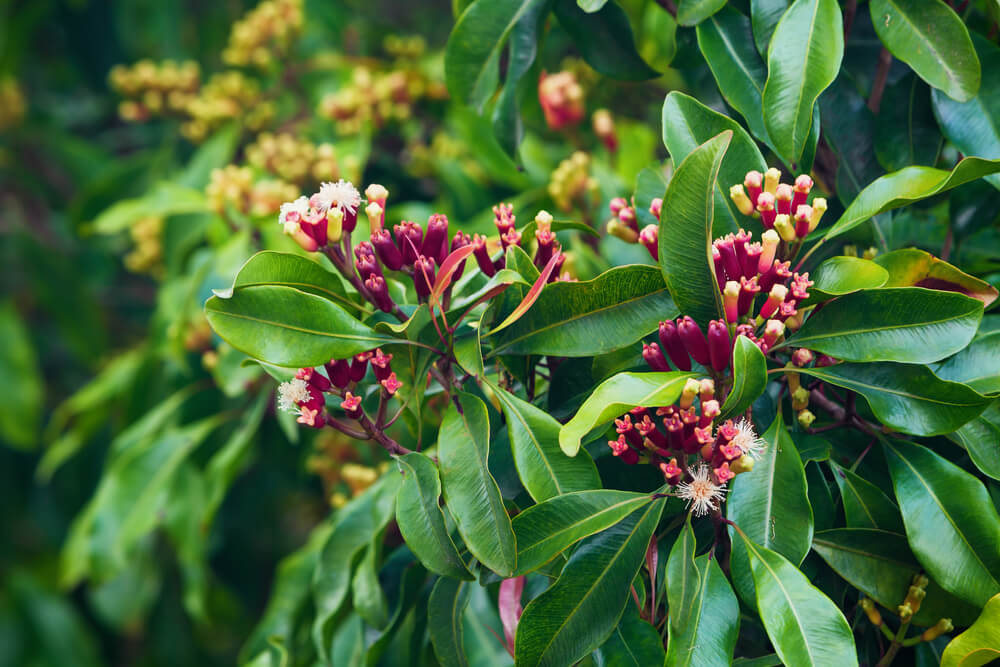
Cloves are an extra special medicinal herb that are loaded with beneficial antioxidants. By helping reduce oxidative stress, antioxidants reduce your susceptibility to disease and illness.
Clove oil has been investigated for its antibacterial effects. It is particularly great for helping fight plaque and bacteria in the mouth (13✓).
Clove is particularly rich in the compound eugenol, which possesses strong pain-relieving benefits. It is known to help ease toothaches and may speed the healing of wounds (14✓).
Clove trees like plenty of organic fertilizer and drainage. Do not attempt to grow outdoors in temperate zones. They will not survive in areas that drop below 15º Celcius (59º F). You can alternatively grow them in large well-drained containers and bring them indoors in winter.
7. Dandelion (Taraxacum officinale)

While many people dig out this plant widely considered a ‘weed’ in most regions, it is actually one of the best medicinal herbs out there.
The great thing about this plant is that the flower, greenery, and root can all be consumed. It is a rich source of vitamins A, B complex, and C, as well as minerals like potassium, iron, and zinc.
Dandelion leaves can be used to help stimulate digestion and support liver health. They actually increase the release of stomach acid and bile to aid digestion, especially of fats (15✓).
The plant acts as a natural diuretic, which helps the kidneys excrete excess waste, salt, and water by increasing urine production and frequency of urination.
Dandelion root tea is also known for helping fight cancer cells (16✓).
Dandelions grow everywhere, but if you want some for your own garden, start them from seed or transplant full plants to different areas of your yard.
8. Dill (Anethum graveolens)

If you don’t have any dill in your garden, now’s the time to start including it!
Dill contains a significant amount of vitamin C, and for this reason, it is particularly great at boosting the immune system.
The monoterpenes found in dill activate an enzyme that helps attach the antioxidant molecule glutathione to oxidized molecules that would otherwise cause harm to the body (17✓).
Dill has even been studied for its ability to prevent bacterial overgrowth, so much so that its effectiveness is similar to that of garlic (18✓).
Dill is a perennial plant, so if you let it go to seed, a new crop will come up the following year.
9. Echinacea (Echinacea purpurea)

Most well-known for its immune-boosting effects, echinacea is a great flower to grow and store for the winter months.
Echinacea contains powerful phytochemicals that have been found to combat inflammatory cytokines that normally weaken the immune response and trigger cancer cell activation (19✓).
These effects also extend to echinacea’s ability to fight viral respiratory infections, including the flu (20✓). In addition, the anti-inflammatory properties of echinacea help alleviate pain associated with toothaches, sore throats, snake bites, stomachaches, the herpes simplex virus, and headaches.
Research also shows that products containing echinacea can improve skin health by boosting hydration and reducing wrinkles (21✓).
Plant echinacea in an area that is mostly sunny and not too wet. A great companion to plant next to echinacea is butterfly weed, or Asclepias. It is a beautiful bright yellow flower that also attracts butterflies (hence the name!).
10. Garlic (Allium sativum)

If you’re wondering what herbs you should grow in your medicinal herb garden, garlic should be at the top of the list.
Garlic not only supports a healthy immune system, but it contains allyl sulfides, which are anti-inflammatory, cancer-fighting compounds that have been found to slow the growth rate of cancer cells (22✓).
Garlic is particularly great at supporting the cardiovascular system. Studies have shown that consuming garlic has a significant impact on reducing high blood pressure (23✓). It also improves cholesterol levels, which may lower the risk of heart disease (24✓).
Garlic can also be crushed and added to coconut oil and then strained after 1-2 hours to be used as an effective earache remedy.
Plant your garlic in full sun, next to lettuce and parsnips to help repel insects.
11. Ginger (Zingiber officinale)

Not many people are aware that they can grow ginger in their medicine herb garden, but it is very much a possibility.
I love ginger for many reasons, particularly its ability at healing various digestive complaints.
When it comes to irritable bowel syndrome (IBS), ginger has been found in some studies to help relieve symptoms in over 53.5% of participants. When someone has an IBS flare-up, ginger is able to help relax the intestines and thus relieve some of the symptoms associated with the condition (25✓).
Ginger is also well-known for its anti-inflammatory effects. It contains compounds known as gingerols, which act on receptors located on sensory nerve endings. It’s pain-relieving effects are largely studied in women who experience painful menstrual periods. Studies have found that ginger works just as effectively as drugs like mefenamic acid and ibuprofen at reducing menstrual cramps (26✓).
To grow ginger, source some organic ginger root and look for ones that are starting to sprout. Cut off each sprout (about 1 inch below the sprout) so you have little rhizome buds to plant in the soil. Make sure the sprout is pointed up when planting. Cover with soil, water well and keep in a sunny area.
12. Ginseng (Panax ginseng)
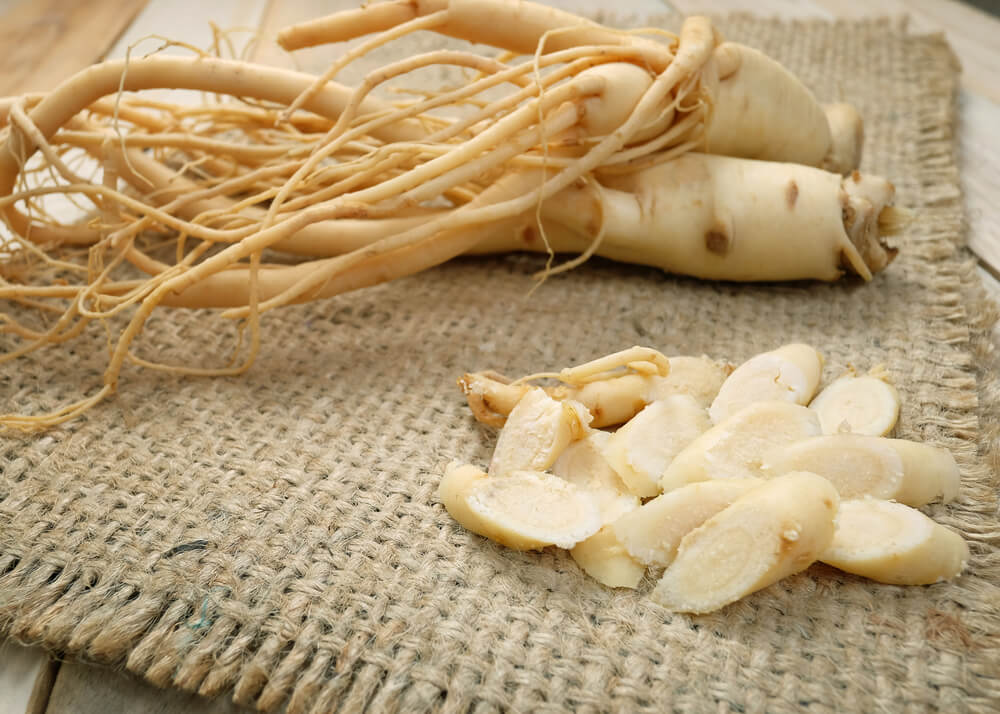
Ginseng is a medicinal plant that has been used for centuries to treat various health conditions. It is particularly great at bolstering the immune system, strengthening the central nervous system and relieving stress (27✓).
Ginseng also acts as a natural stimulant, helping to improve focus and attention. It has also been shown to improve sex drive in premenopausal women (28✓) and can help men with erectile dysfunction (29✓).
Ginseng is a perennial, and prefers neutral soil over acidic soil. It is a shade-loving plant that requires many years to grow to maturity before you can harvest. But the benefits far outweigh the patience you’ll need to get there.
13. Gotu-Kola (Centella asiatica)
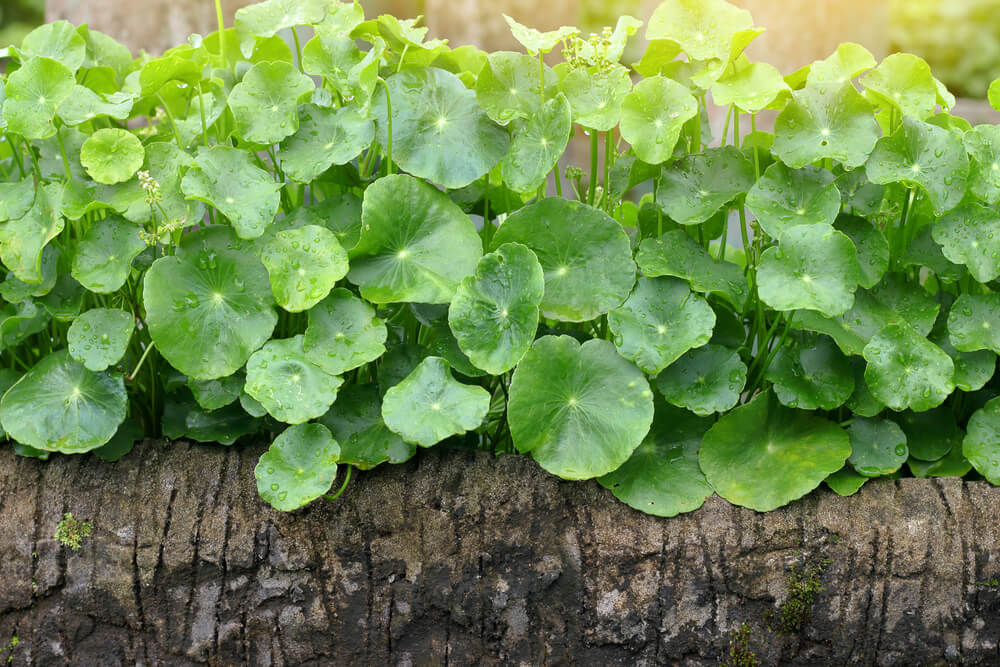
Termed the “herb of longevity”, gotu kola is a herb that has been used in traditional Chinese, Indonesian and Ayurvedic medicine for centuries.
One of gotu kola’s prized benefits is its ability to boost cognitive function (30✓). In Southeast Asia, gotu kola is believed to be the source of elephants’ long life spans and impeccable memory (31).
In addition to its nervous system support, gotu kola is also used by herbalists as a wound healer, diuretic and antibacterial remedy.
This plant is a water-lover, so you need to make sure the soil is evenly and consistently moist and well-drained throughout the day. You could technically companion plant it with taller plants to ensure it gets enough shade to not dry out throughout the day.
14. Holy Basil (Ocimum tenuiflorum)

Holy basil, also known as Tulsi, is a jack of all trades. It functions as an antimicrobial, antioxidant, anti-inflammatory, and helps protect the liver, brain, and heart.
One of my favorite benefits of holy basil is its ability to relax the nervous system. I’ve personally found that it relaxes even better than chamomile and lemon balm (not to say you shouldn’t grow those herbs, as they all come with their own unique benefits).
As an adaptogen, holy basil naturally balances hormone levels and lowers symptoms of anxiety.
According to an article published in the Journal of Ayurveda and Integrative Medicine, holy basil “has also been shown to counter metabolic stress through normalization of blood glucose, blood pressure, and lipid levels, and psychological stress through positive effects on memory and cognitive function and through its anxiolytic and antidepressant properties” (32✓).
The primary active compound in holy basil is eugenol, a compound also found in cloves, which is known to help combat skin infections both internally and externally (33✓).
Studies also show that holy basil can protect the body against toxic chemicals like heavy metals. It may also prevent cancer by halting the spread and growth of cancerous cells (34✓).
Holy basil grows very similar to regular basil in that it needs warm temperatures and well-drained soil. It can also tolerate some shade, so planting in full sun is not necessary.
15. Lavender (Lavandula angustifolia)

Lavender is an essential in any medicine herb garden. It acts as a sedative, antidepressant, anti-anxiolytic, anti-convulsant and calming agent. But that’s not all. It can also help treat skin blemishes, fight pain and may promote hair growth.
Researchers have even found that the mere scent of lavender is enough to lower anxiety individuals who experience distress while undergoing dental work (35✓).
Studies have also found lavender as an effective remedy to speed the healing of burns, cuts, scrapes, and wounds. Some studies have suggested it does so by accelerating new tissue growth on damaged skin and promoting collagen synthesis (36✓).
Lavender should be started in a container outdoors and brought indoors during the cooler months. You can use the buds to make your own lavender lemonade throughout the summer.
16. Lemon Balm (Melissa officinalis)
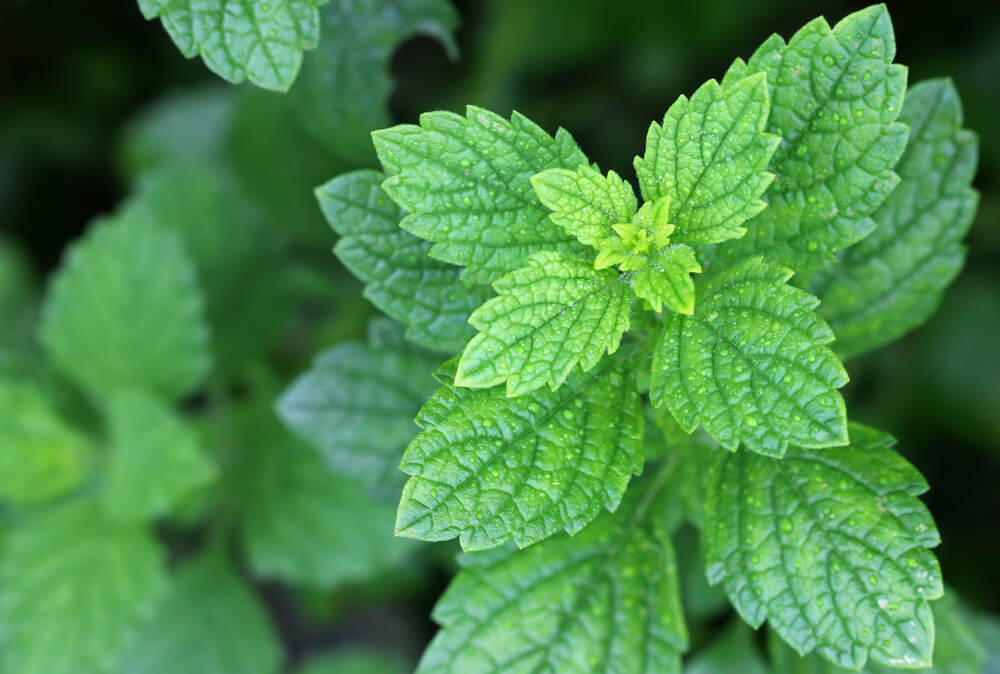
Another nervous system toner, lemon balm functions as an effective mild sedative and may help with restlessness and insomnia.
Studies have reported its effectiveness in reducing symptoms of stress to help you relax and boost your mood (37✓). The herb may also be used to ease anxiety, nervousness and excitability (38).
Lemon balm is also an effective agent against the herpes simplex virus (HSV) (39✓). The oil can either be applied externally to the cold sore, or lemon balm tincture or tea can be taken internally to reduce viral shedding.
Planting lemon balm is quite simple. They prefer shadier parts of the garden, with moist soil. It can be planted in companion with winter and summer squash, melons, tomatoes, and all members of the cabbage family.
17. Marigold/Calendula (Calendula officinalis)
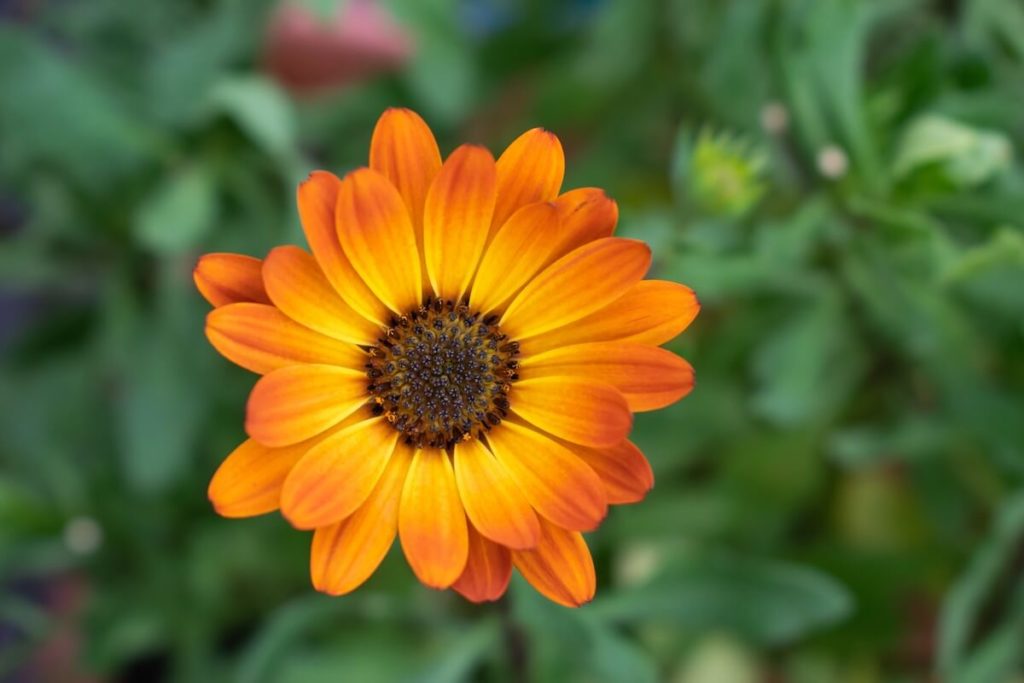
When considering medicinal herbs to grow in your garden, don’t overlook this special contender.
Pot marigold, or calendula, is a wonderful plant to help soothe sunburns, warts, bites, and acne. It can also help heal wounds and remedy dry skin (40✓).
This flower is really a jack of all trades. It lowers inflammation and free radical damage (41✓), has natural antiseptic properties (42✓), can ease menstrual cramps and naturally repels bugs.
Calendula should be grown in full sun or part shade and can be grown alongside companions like cucumbers, tomatoes, peas, carrots, and asparagus.
18. Marshmallow (Althaea officinalis)
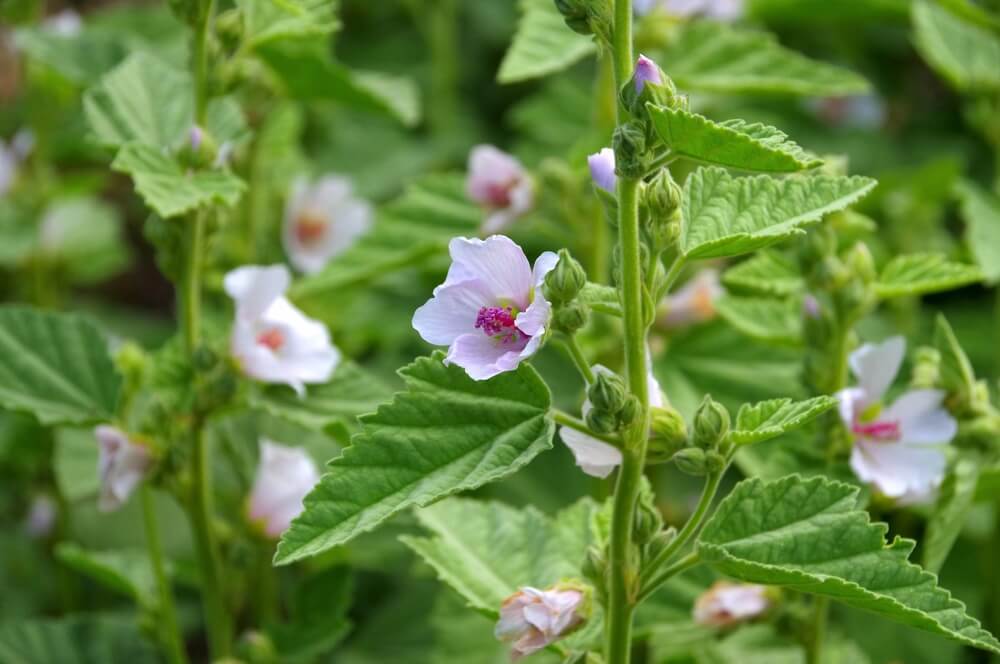
Yes, marshmallow is actually a plant, not just a sugary puff!
Marshmallow root is a plant native to Africa and some parts of Europe. It has been utilized as an herbal remedy for centuries.
Marshmallow root acts as a demulcent, meaning it helps protect sensitive mucus membranes in our respiratory tract and digestive system. The root has actually been shown to act as an enzyme to loosen mucus and inhibit bacterial growth (43✓).
Marshmallow is also effective in relieving coughs due to colds, bronchitis, or respiratory tract diseases with the formation of mucus (44✓).
It can also be used to treat burns, wounds, insect bites and can help with eczema and dermatitis of the skin.
Marshmallow plants grow best in sandy, moist soil. They need partial shade to full sun.
19. Motherwort (Leonurus cardiaca)
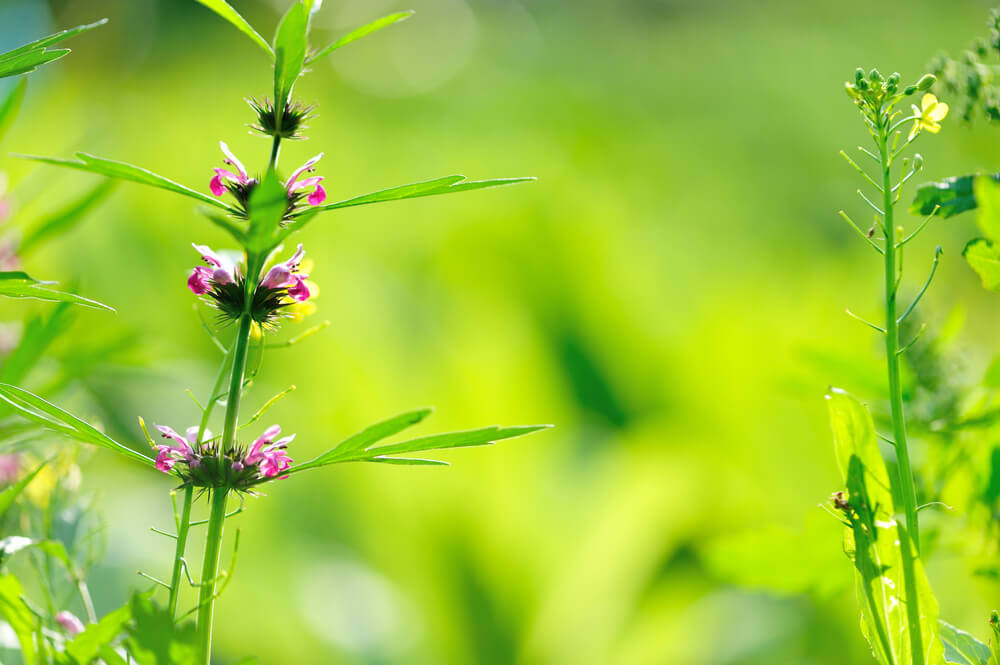
Motherwort is an incredible medicinal herb that may have cardio-protective abilities. It is said to calm anxiety and lower blood pressure.
Motherwort contains a particularly special compound called leonurine, which has been found to promote the relaxation of blood vessel walls in preliminary studies (45).
This same compound encourages uterine contractions, which could very well explain its role in promoting menstruation. For this reason, motherwort should not be taken during pregnancy or if you’re trying to get pregnant.
Studies have also found the herb’s effectiveness in reducing symptoms of anxiety and depression (46✓).
Motherwort is a hardy perennial plant that should be direct-sown into the soil. For best results, look for a spot with well-draining soil and partial to full sun.
20. Mullein (Verbascum thapsus)

Mullein is one of my top favorite medicinal herbs, particularly for targeting lung health.
Mullein helps the lungs because it acts as an expectorant. This means that it helps the body remove excess mucus from the lungs, and soothes the mucus membranes with its emollient properties.
Mullein can help with dry or wet cough, lung weakness, bronchitis, asthma, respiratory constriction and chest colds.
These effects may be due in part to the antibacterial properties of mullein. Researchers have reported that the plant’s extracts are effective against disease-causing bacteria like Klebsiella pneumoniae, Staphylococcus aureus, Staphylococcus epidermidis and Escherichia coli (47✓).
Mullein is considered a ‘weed’ in many areas, but you can grow it yourself to harness your own medicine right at home. They can grow as tall as 10 feet when flowering. If you don’t want the plant to spread to other parts of your garden, remove the flower stalk before the seeds have dispersed.
21. Nettle (Urtica dioica)

Stinging nettle has a long medicinal history. It was used as a natural diuretic and remedy to treat joint pain in medieval Europe and was also used as a fiber crop substitute for flax.
When prepared properly, nettles may help soothe symptoms of allergies such as those triggered from hay fever (48✓).
The plant possesses anti-inflammatory and analgesic properties as well, making it great for helping relieve pain from sore, stiff muscles and joints. According to a review published in 2018, nettles may help alleviate the symptoms of osteoarthritis and joint pain, including areas like the hands, knees, hips, and spine (49✓).
If you don’t want to go forage it in the forest, you can start your own nettle plants in your garden. Just be sure to not rub up against them, as they can irritate the skin. When harvesting, you need to be specific about how you harvest the leaves, as they can sting you if you’re not careful.
22. Onion (Allium cepa)

Onions are a great all-around medicinal herb that can be used for just about anything. The compounds found in onions are anti-carcinogenic, antiviral, and antibacterial. They also happen to be potent antioxidants as well.
Onions are a rich source of sulfur, which has been found in studies to prevent the growth and spread of cancer by protecting cells from mutation and inducing apoptosis (50✓). They’re particularly great at protecting from cancers of the digestive tract.
Onions also protect the cardiovascular system by reducing the risk of blood clot formation. They’ve even been found to help increase bone density in women (51✓).
It has also been said in some folklore that if you come down with a cold or the flu, slice some onion into rounds and place them on the bottom of your feet, followed by a pair of socks. When you wake up, your symptoms will be dramatically reduced.
Growing onions is quite easy. You can even grow an onion from your onion scraps at home. If you have leftover ends from an onion with the roots still intact, you can let this end soak in some water until green shoots sprout from the top and white shoots extend from the base. Transplant to soil in the spring once it has finished sprouting, and harvest late fall.
23. Oregano (Origanum vulgare)

Oregano is a popular herb used in kitchens all over the world. But it doesn’t just taste good – it has a myriad of benefits, too.
For one, it’s an effective anti-bacterial. Thanks to the volatile oils present in oregano, namely, thymol and carvacrol, this herb is effective at inhibiting the growth of certain bacteria like Pseudomonas aeruginosa and Escherichia coil (52✓).
The high antioxidant content of oregano also lends it some impressive anti-cancer qualities, helping to neutralize free radicals and stop the spread of cancer cells (53✓).
Oregano is also highly antiviral and acts as an effective anti-inflammatory.
If you want to plant oregano in your garden, be sure to plant it next to plants in the brassica family (like cabbage, kale, broccoli, cauliflower, etc.) as it can help repel cabbage moths.
24. Parsley (Petroselinum crispum)

Parsley is well-known for its disease-fighting properties. Growing this medicinal herb in your garden means you’ll always have some on hand.
Parsley is high in apigenin, which has been shown to suppress over-stimulated immune systems. This makes it useful in fighting allergies, as well as autoimmune and chronic inflammatory disorders (54✓).
The herb acts as a natural diuretic, so it is great for helping lowering blood pressure, and flushing the body of built-up toxic waste matter (55✓).
In addition, the herb is highly anti-inflammatory, thanks to high levels of vitamin C, which can provide relief for those suffering from osteoarthritis and rheumatoid arthritis (56✓).
Parsley can be direct-sown into the soil and will last well into the cooler months. It is super hardy, so even if it snows, you’ll still be able to harvest parts of the plant for personal use!
25. Peppermint (Mentha x piperita)

Peppermint is an incredibly useful herb when you want to quickly remedy digestive upsets or even a nagging headache.
Peppermint contains menthol, which is a compound that helps relax muscles and ease pain (57✓). Many people swear by rubbing peppermint essential oil on their temples to help relieve pain from tension headaches and migraine attacks.
With respect to the digestive tract, peppermint improves the flow of bile by calming down the muscles of the stomach. This helps ease gas, bloating and diarrhea. Peppermint oil capsules are actually a common remedy for those who suffer from irritable bowel syndrome (IBS) (58✓).
In addition to these awesome benefits, peppermint also works as an anti-inflammatory, relieves nausea, reduces bad breath and can be used for muscle pain relief.
Peppermint should be planted next to kale, cabbage, cauliflower and broccoli to help discourage cabbage butterflies that can ruin your crop.
26. Plantain (Plantago major)

Plantain is a soothing anti-inflammatory herb that is well known for helping conditions of the lungs like bronchitis.
The moistening properties of plantain make it an ideal remedy for coughs that are chronic or acute. One of the best ways to use plantain is by steeping 1-2 tablespoons of the dried herb in 1 cup of hot water. It can help get rid of dry, nagging, hacking coughs that persist long after an upper respiratory infection has healed.
Plantain leaves can also be crushed and applied topically to treat insect bites and stings, eczema, and small wounds (59).
Plantain can be transplanted from a mother plant or started from seed. They prefer full sun or partial shade and can grow in nearly any type of soil (even sandy or rocky soil). Plantain easily reproduces, so there is little risk of over-harvesting.
27. Rosemary (Salvia rosmarinus)

Rosemary is not only known for its great taste and smell; it is also renowned for some of its incredible health benefits.
First and foremost, rosemary is well-known for its ability to improve our memory systems. In fact, just the mere act of smelling the volatile oils of rosemary is enough to improve memory quality and secondary memory factors. It can also help people stay more alert (60✓).
The herb has also been found to reduce cortisol (stress) levels, which protects the body from chronic disease due to oxidative stress (61✓).
Some studies have even shown that rosemary exhibits anti-cancer properties in vitro for colon, pancreatic, breast, prostate, ovarian, cervical, bladder and liver cancer (62✓).
Rosemary is a great pot-plant and should be grown in a sunny location. Only water when the soil feels dry as this plant prefers conditions on the drier side. Prune the plant frequently as they can grow into massive bushes left untamed (unless that’s how you like it – then let the rosemary run wild!).
28. Sage (Salvia officinalis)

Sage is a medicinal herb packed with antioxidants and flavonoids to reduce free radicals in the body thereby lowering levels of inflammation.
Sage is naturally antimicrobial. Not only does it cleanse our bodies, but it cleanses the air around us when diffused or burned. Studies have found that it works as an effective disinfectant against airborne microorganisms (63✓) and can help minimize body odor (64✓).
The antimicrobial properties of sage also extend to oral health. One study found that a sage-based mouthwash effectively eradicated the Streptococcus mutans bacteria, which is known for causing dental cavities (65✓).
In addition, sage may help ease menopause symptoms, reduce blood sugar levels and may support memory and brain health.
Garden sage is easy to grow and harvest. It is a hardy perennial that should be planted in full sun and in well-draining soil. Sage makes a great companion next to other plants like rosemary, cabbage, and carrots. Keep sage away from cucumbers.
29. Baikal Skullcap (Scutellaria baicalensis)

Baikal skullcap or Chinese skullcap is an herb commonly used in traditional Chinese medicine. It contains two compounds that are of particular interest here: baicalin and baicalein.
This herb is well-known for its ability to calm nervousness and anxiety and help those with sleeping troubles. Research has confirmed these anxiolytic effects in animals and humans (66✓).
Skullcap also has cardioprotective effects, with some studies finding that the herb may be useful in preventing or even terminating heart disease conditions like myocardial infarction (67✓).
Baikal skullcap is a perennial plant that can be planted in zones 4 through 8. It prefers partial shade to full sun. Make sure it is planted in well-drained soil. The Baikal species of skullcap grows along the ground rather than straight up. At maximum height, they reach 12 inches tall.
30. St. John’s Wort (Hypericum perforatum)

You might have already heard of this herb due to its popularity as a natural anti-depressant.
Many studies have shown that St. John’s wort may help fight mild to moderate depression and anxiety. A meta-analysis that included 27 clinical trials and over 3,800 patients concluded that the herb has comparable efficacy and safety to selective-serotonin re-uptake inhibitors (SSRIs) like Prozac, Celexa and Zoloft (68✓).
St. John’s wort is also beneficial for reducing symptoms of PMS like depression, chronic fatigue and hormonal imbalance (69✓).
St. John’s wort should be grown in full sun or partial shade in moist, well-drained soil. The plant prefers slightly acidic soil, so avoid planting in alkaline soil. The plant bushes out as it matures, so choose a spot that can accommodate a plant that can grow 1-5 feet tall and 1-4 feet wide.
31. Stevia (Stevia rebaudiana)

Aside from being a safe and healthy sugar substitute, stevia comes with some impressive health benefits.
One of my favorite benefits of stevia is its ability to fight Lyme disease. Researchers at the University of New Haven found that stevia leaf extract killed Lyme disease in all its different forms (the bacterium shifts into different states for survival purposes, but stevia is able to combat it in all its sneaky stages). It was found to work even better than antibiotics normally used to fight the disease (70✓).
Other studies have found stevia’s effectiveness in killing off breast cancer cells. It does so by enhancing cancer apoptosis (cell death) and decreasing pathways in the body that encourage cancer cell growth (71✓).
Stevia also lowers high blood pressure and improves cholesterol levels.
Stevia can be started from seed or purchased as a plant and transplanted to a pot or in the garden. If you want to keep it sweet, make sure it gets enough water, and don’t let it go to flower. Once it goes to flower, the leaves might turn bitter. Just chop off the flowers once you start to see them come up, and your plant should stay sweet all summer long.
32. Thyme (Thymus vulgaris)

When deciding what herbs you should grow in your medicinal herb garden, be sure to include thyme.
Not only is this herb an excellent source of vitamin C, but it is also a good source of vitamin A, which protects your eyes from night blindness and age-related decline.
Thyme contains powerful chemical constituents like thymol and carvacrol, which are resistant to harmful organisms and promote fungal balance (72✓).
Another benefit of thyme is its ability to reduce pain. Studies have confirmed that thyme essential oil reduces painful menstrual cramps even better than ibuprofen (73✓).
Drinking thyme tea also has some great benefits for our respiratory system. In Germany, thyme is an official approved treatment for coughs, upper respiratory infections, bronchitis and whooping cough. The herb’s leaves contain a cough-calming compound that relaxes the muscles of our trachea and reduce inflammation (74✓).
Thyme needs to be planted in an area with plenty of sunlight. It is a drought-resistant plant, so only water once the soil is completely dry. Thyme plants well as a companion next to strawberries, cabbages, tomatoes, eggplants, broccoli and Brussels sprouts.
33. Turmeric (Curcuma longa)

Turmeric is a wonderful inflammation-fighting medicinal herb that has been raved about the last decade.
One of the most compelling studies on turmeric comes from a study published in the journal Oncogene, which found curcumin (the active component in turmeric) to out-perform the two most common NSAIDs in the world, aspirin and ibuprofen, for pain relief (75✓).
Curcumin has long been studied as a natural cancer treatment and preventative. It has been found to affect cancer growth, development, and spread at the molecular level (76✓).
Curcumin also acts as a natural anti-depressant, so much so that it has been found to work equally effective as Prozac in managing depression after six weeks of use (77✓).
Turmeric can be started from fresh organic turmeric found in stores. All you need is a little piece of the rhizome that has started to sprout. Plant in rich natural soil with organic fertilizer. The rhizome buds should be 2-inches beneath the surface with the buds pointing up. Water your turmeric every 2 days and it will start to grow!
Turmeric takes 6-10 months for consumable rhizomes to develop, but once they start, they never stop. Harvest only what you need and the plant will continue to grow.
34. Valerian (Valeriana officinalis)

Valerian root is a great herb to keep on hand if you’ve been dealing with issues related to sleep.
Studies show that this herb can actually reduce the amount of time it takes you to far asleep, thereby improving sleep quality and waking up more relaxed in the morning (78✓).
This effect may also be enhanced by the fact that valerian increases the amount of a chemical called GABA, which regulates our nervous system and calms anxiety (79✓). Other drugs like Xanax and Valium also work by increasing GABA levels in the brain, so by utilizing natural herbs like valerian instead, you can offset the serious side effects of these psychotropic drugs.
Valerian is a perennial plant that is harvested for its roots. For this reason, be sure to leave some valerian root behind so that more can come up the following growing season. Valerian is extremely cold hardy, even in harsh winter climates.
35. Yarrow (Achillea millefolium)

Last but certainly not least in the wonderful world of herbs, yarrow is a plant medicine you should keep nearby for a variety of reasons.
Yarrow contains flavonoids, which are plant-based chemicals that increase saliva and stomach acid to improve digestion (80✓). It has long been used to treat digestive issues like ulcers and irritable bowel syndrome (IBS), which often comes with stomach pain, diarrhea, bloating and constipation.
Yarrow can also be used to reduce chronic inflammation which would normally lead to cell, tissue and organ damage (81✓). It is particularly useful for reducing inflammation of the digestive tract.
According to St. Luke’s Hospital, yarrow may also be used to “relax smooth muscle in the intestine and uterus, which can relieve stomach and menstrual cramps.” (82).
Yarrow can be started from seeds or can be transplanted as a plant. They prefer direct sunlight and thrive in well-drained soil. The plant needs little care, so it is great to plant for those who don’t remember to water their garden.
The Bottom Line
There are various medicinal herbs to grow in your garden, but picking the right ones will ensure you have all your bases covered.
From helping reduce inflammation, to bolstering the immune system and easing coughs, headaches, anxiety and stress, these 35 medicinal herbs may very well feel like freedom growing in the garden.

Source: 35 Medicinal Herbs to Grow in Your Garden This Summer
